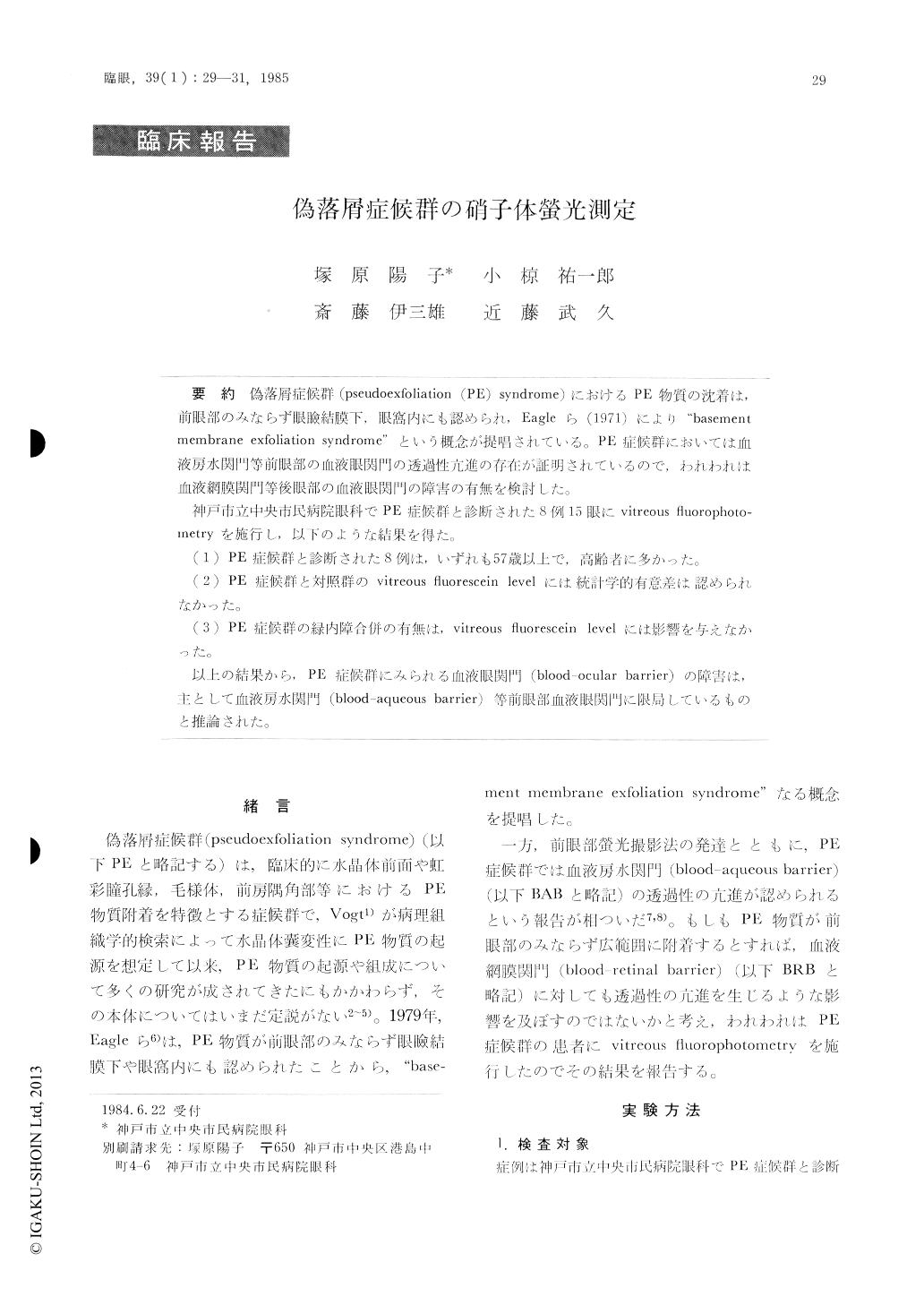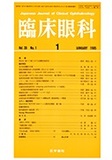Japanese
English
- 有料閲覧
- Abstract 文献概要
- 1ページ目 Look Inside
偽落屑症候群(pseudoexfoliation (PE) syndrome)におけるPE物質の沈着は,前眼部のみならず眼瞼結膜下,眼窩内にも認められ,Eagleら(1971)により"basementmembrane exfoliation syndrome"という概念が提唱されている.PE症候群においては血液房水関門等前眼部の血液眼関門の透過性亢進の存在が証明されているので,われわれは血液網膜関門等後眼部の血液眼関門の障害の有無を検討した.
神戸市立中央市民病院眼科でPE症候群と診断された8例15眼にvitreous fluorophoto-metryを施行し,以下のような結果を得た.
(1) PE症候群と診断された8例は,いずれも57歳以上で,高齢者に多かった.
(2) PE症候群と対照群のvitreous fluorescein levelには統計学的有意差は認められなかった.
(3) PE症候群の緑内障障合併の有無は,vitreous fluorescein levelには影響を与えなかった.
以上の結果から,PE症候群にみられる血液眼関門(blood-ocular barrier)の障害は,主として血液房水関門(blood-aqueous barrier)等前眼部血液眼関門に限局しているものと推論された.
Iris fluorescein angiography has shown a pro-nounced increase in vascular permeability in anterior ocular segment in eyes with pseudoexfolia-tion of the lens.Pseudoexfoliation materials are known to be synthesized in ocular extrabulbar tissues. In these contexts, we performed scanning vitreous fluorophotometry in a series of 15 eyes (8 patients) with pseudoexfoliation syndrome. Capsular glaucoma was present in 6 of these eyes.
The mean fluorescein concentration in the vitreous 1hour after i.v. administration of the dye (7 mg/kg) was 2.7 +0.4ng/ml for control eyes and 4.9 ± 1.3ng/ml for eyes with pseudoexfoliatoin.This apparent increase was not significant. The values were also insignificant for 6 eyes with capsular glaucoma.
These findings seems to indicate that an increased vascular permeability in pseudoexfoliation syn-drome occurs in the blood-aqueous barrier. The function of the blood-retinal barrier in the pos-terior ocular segment close not appear to be affected in this condition.

Copyright © 1985, Igaku-Shoin Ltd. All rights reserved.


